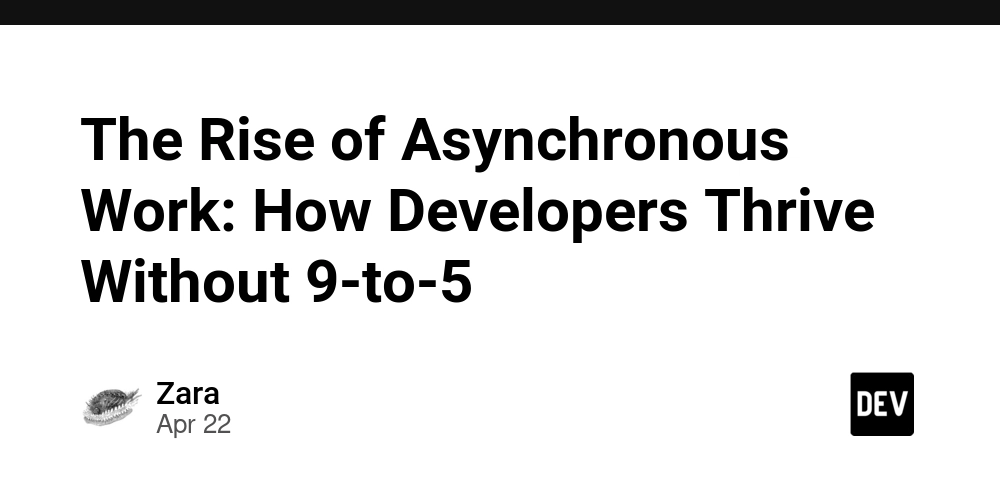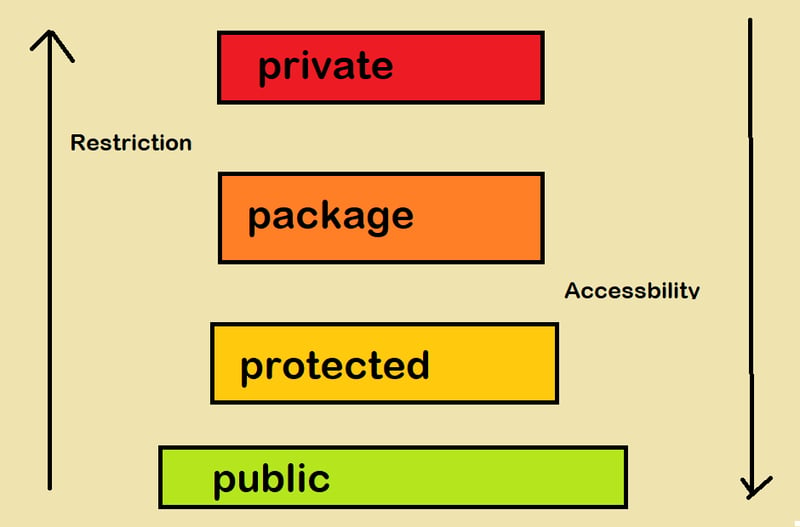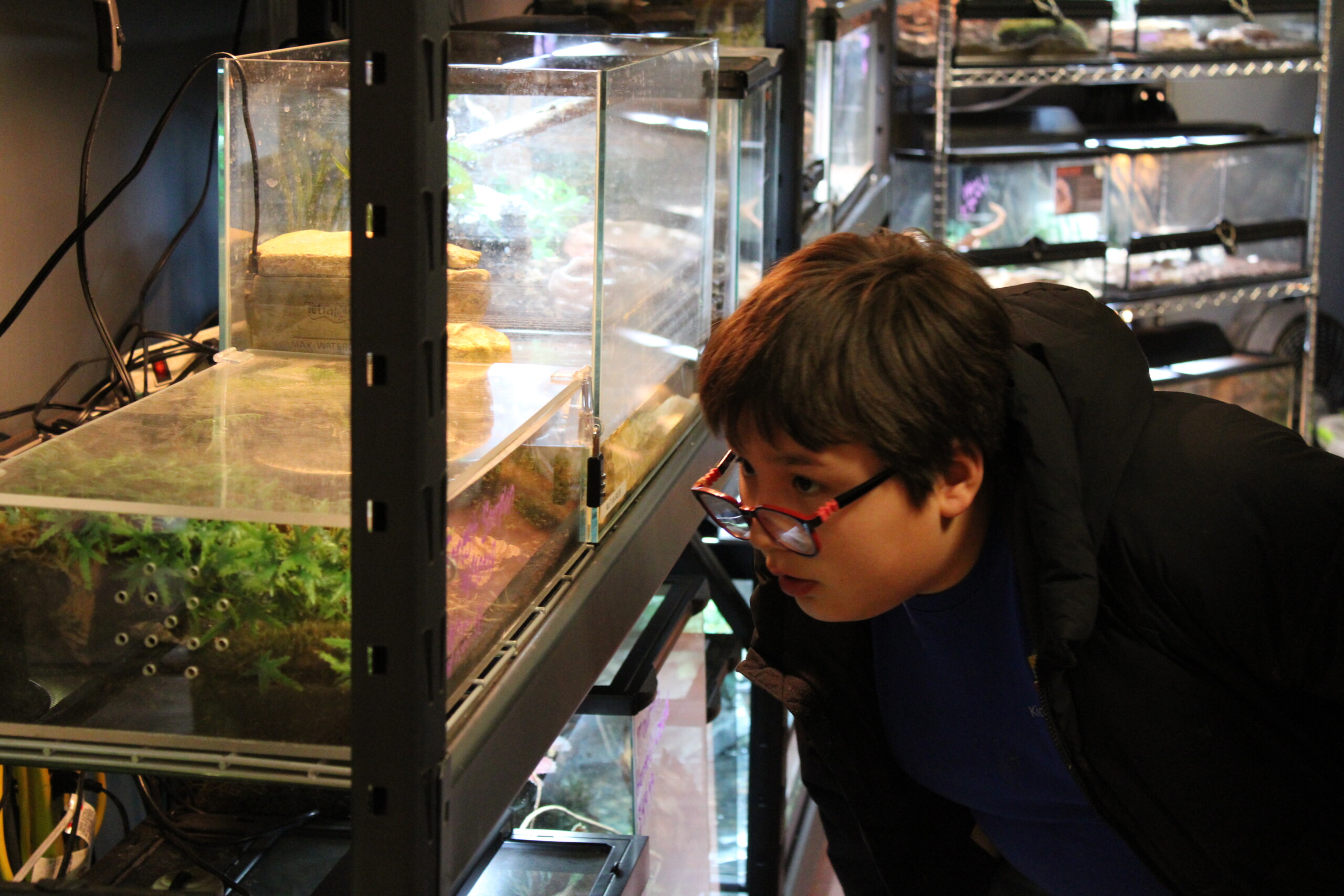The Rise of Asynchronous Work: How Developers Thrive Without 9-to-5
In the evolving world of tech, one concept is redefining the way developers work: asynchronous work. Gone are the days when productivity was measured by the hours you spent in a chair from 9 to 5. Instead, we're entering an era where flexibility, deep work, and outcome-driven performance are becoming the new standard. This shift isn’t just a perk for digital nomads or freelancers. It’s a structural change that tech companies worldwide are embracing. For developers especially, async work is a game-changer—one that offers autonomy, better focus, and access to global opportunities. What Is Asynchronous Work? Asynchronous (or async) work means that team members don’t need to be online or working at the same time. Unlike synchronous work (think: Zoom calls, live standups, and real-time chats), async workflows let individuals contribute on their own schedules. This doesn’t mean there's zero communication. It just means communication is time-shifted. Instead of jumping on a call, you record a Loom video. Instead of a daily standup meeting, you update your team via Slack or Notion. The idea is to allow people to respond when they’re most productive—not when the clock says it's time. Why Asynchronous Work Suits Developers Developers thrive in environments that support deep focus and uninterrupted flow. Here's why async work is practically tailor-made for coders: 1. Fewer Interruptions, More Flow Coding requires concentration. Constant notifications or meetings can break that focus. Async environments prioritize thoughtful responses over instant ones, letting devs dive deep into problem-solving. 2. Work When You Work Best Not everyone writes their best code at 10 a.m. Async setups allow for personal work rhythms—early birds and night owls alike can perform at their peak. 3. Global Collaboration Without Burnout In traditional setups, time zone differences can mean late-night or early-morning meetings. With async, collaboration happens through docs, recorded messages, and well-structured updates, reducing the need for inconvenient real-time meetings. 4. Documentation Becomes a Superpower Async work promotes clarity. Since communication often happens through written or recorded formats, teams naturally develop better documentation habits. This helps new hires onboard faster, reduces misunderstandings, and creates a single source of truth. 5. Better Work-Life Balance Flexibility means being able to take a walk, pick up your kids, or go to the gym—without guilt. When developers control their schedules, burnout decreases and overall satisfaction increases. Tools That Make Async Work Seamless Async isn’t possible without the right toolkit. Here are some of the top tools empowering developers to work asynchronously: Loom / Berrycast: For screen-recorded video updates Slack (with Do Not Disturb + Threads): For non-urgent messaging Notion / Confluence: Centralized docs and project updates Linear / Jira: Task and project tracking GitHub / GitLab: Version control + async code reviews Clockwise / Google Calendar: Smart scheduling to block deep work time Transitioning to an Async-Friendly Workflow Making the switch requires more than tools—it requires a cultural shift. Here are some tips for teams and developers making the leap: Set Clear Expectations: Define response windows, document communication protocols, and align on working hours where needed. Over-Communicate Thoughtfully: Write clear, detailed updates. Don’t assume context. Trust and Accountability: Async only works when people trust each other to deliver without constant check-ins. Create "Sync Windows": If needed, set optional hours where teammates can be available for quick real-time chats. Celebrate Output, Not Online Time: Reward delivered results, not time spent in meetings or chat. The Future Is Remote and Async The async model is no longer just a nice-to-have; it’s becoming the norm for modern, remote-first teams. Especially in software development, where output matters more than presence, async enables better productivity and healthier work dynamics. For developers looking to embrace this model fully, finding the right role matters. That's where curated job platforms like FarCoder Jobs come in. We specialize in connecting developers with remote opportunities at companies that get async work. Whether you’re a full-stack dev, DevOps engineer, or backend wizard, you can find async-friendly jobs that align with your values and work style. Final Thoughts Asynchronous work isn’t just a buzzword. It’s a paradigm shift that empowers developers to reclaim their time, focus deeper, and collaborate smarter. If you’re tired of Zoom fatigue and crave more control over your day, the async revolution is calling. The 9-to-5 isn't dead—but for many developers, it’s no longer the goal. Ready to find your async-first job? Expl

In the evolving world of tech, one concept is redefining the way developers work: asynchronous work. Gone are the days when productivity was measured by the hours you spent in a chair from 9 to 5. Instead, we're entering an era where flexibility, deep work, and outcome-driven performance are becoming the new standard.
This shift isn’t just a perk for digital nomads or freelancers. It’s a structural change that tech companies worldwide are embracing. For developers especially, async work is a game-changer—one that offers autonomy, better focus, and access to global opportunities.
What Is Asynchronous Work?
Asynchronous (or async) work means that team members don’t need to be online or working at the same time. Unlike synchronous work (think: Zoom calls, live standups, and real-time chats), async workflows let individuals contribute on their own schedules.
This doesn’t mean there's zero communication. It just means communication is time-shifted. Instead of jumping on a call, you record a Loom video. Instead of a daily standup meeting, you update your team via Slack or Notion. The idea is to allow people to respond when they’re most productive—not when the clock says it's time.
Why Asynchronous Work Suits Developers
Developers thrive in environments that support deep focus and uninterrupted flow. Here's why async work is practically tailor-made for coders:
1. Fewer Interruptions, More Flow
Coding requires concentration. Constant notifications or meetings can break that focus. Async environments prioritize thoughtful responses over instant ones, letting devs dive deep into problem-solving.
2. Work When You Work Best
Not everyone writes their best code at 10 a.m. Async setups allow for personal work rhythms—early birds and night owls alike can perform at their peak.
3. Global Collaboration Without Burnout
In traditional setups, time zone differences can mean late-night or early-morning meetings. With async, collaboration happens through docs, recorded messages, and well-structured updates, reducing the need for inconvenient real-time meetings.
4. Documentation Becomes a Superpower
Async work promotes clarity. Since communication often happens through written or recorded formats, teams naturally develop better documentation habits. This helps new hires onboard faster, reduces misunderstandings, and creates a single source of truth.
5. Better Work-Life Balance
Flexibility means being able to take a walk, pick up your kids, or go to the gym—without guilt. When developers control their schedules, burnout decreases and overall satisfaction increases.
Tools That Make Async Work Seamless
Async isn’t possible without the right toolkit. Here are some of the top tools empowering developers to work asynchronously:
- Loom / Berrycast: For screen-recorded video updates
- Slack (with Do Not Disturb + Threads): For non-urgent messaging
- Notion / Confluence: Centralized docs and project updates
- Linear / Jira: Task and project tracking
- GitHub / GitLab: Version control + async code reviews
- Clockwise / Google Calendar: Smart scheduling to block deep work time
Transitioning to an Async-Friendly Workflow
Making the switch requires more than tools—it requires a cultural shift. Here are some tips for teams and developers making the leap:
- Set Clear Expectations: Define response windows, document communication protocols, and align on working hours where needed.
- Over-Communicate Thoughtfully: Write clear, detailed updates. Don’t assume context.
- Trust and Accountability: Async only works when people trust each other to deliver without constant check-ins.
- Create "Sync Windows": If needed, set optional hours where teammates can be available for quick real-time chats.
- Celebrate Output, Not Online Time: Reward delivered results, not time spent in meetings or chat.
The Future Is Remote and Async
The async model is no longer just a nice-to-have; it’s becoming the norm for modern, remote-first teams. Especially in software development, where output matters more than presence, async enables better productivity and healthier work dynamics.
For developers looking to embrace this model fully, finding the right role matters. That's where curated job platforms like FarCoder Jobs come in. We specialize in connecting developers with remote opportunities at companies that get async work.
Whether you’re a full-stack dev, DevOps engineer, or backend wizard, you can find async-friendly jobs that align with your values and work style.
Final Thoughts
Asynchronous work isn’t just a buzzword. It’s a paradigm shift that empowers developers to reclaim their time, focus deeper, and collaborate smarter. If you’re tired of Zoom fatigue and crave more control over your day, the async revolution is calling.
The 9-to-5 isn't dead—but for many developers, it’s no longer the goal.
Ready to find your async-first job? Explore the latest remote developer roles at FarCoder.











































































